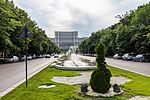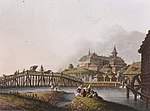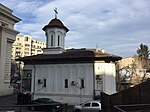Parliament of Romania

The Parliament of Romania (Romanian: Parlamentul României) is the national bicameral legislature of Romania, consisting of the Chamber of Deputies (Romanian: Camera Deputaților) and the Senate (Romanian: Senat). It meets at the Palace of the Parliament in Bucharest, the capital of the country. Prior to the modification of the Constitution in 2003, the two houses had identical attributes. A text of a law had to be approved by both houses. If the text differed, a special commission (Romanian: comisie de mediere) was formed by deputies and senators, that "negotiated" between the two houses the form of the future law. The report of this commission had to be approved in a joint session of the Parliament. After the 2003 referendum, a law still has to be approved by both houses, but each house has designated matters it gets to deliberate before the other, in capacity of "deciding chamber" (Romanian: cameră decizională). If that first chamber adopts a law proposal (relating to its competences), it is passed on to the other one, which can approve or reject. If it makes amendments, the bill is sent back to the deciding chamber, the decision of which is final. In 2009, a referendum was held to consult the population about turning the parliament into a unicameral body and reducing the number of representatives to 300. Although the referendum passed, the results are not binding, a referendum explicitly mentioning the modification of the constitution being required to achieve this.
Excerpt from the Wikipedia article Parliament of Romania (License: CC BY-SA 3.0, Authors, Images).Parliament of Romania
Strada Izvor, Bucharest Centrul Civic
Geographical coordinates (GPS) Address Phone number Website Nearby Places Show on map
Geographical coordinates (GPS)
| Latitude | Longitude |
|---|---|
| N 44.427222222222 ° | E 26.0875 ° |
Address
Palatul Parlamentului
Strada Izvor 2-4
050563 Bucharest, Centrul Civic
Romania
Open on Google Maps








